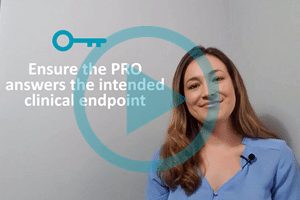Incorporating an economic evaluation within a trial provides valuable information for clinical decision making and coverage determinations, particularly when the clinical effectiveness of the interventions is similar but might vary in terms of patient-reported ability to read, drive or work.
Understanding the impact of an investigational drug on patients’ quality of life (QoL), and analyzing its economic consequences, is why many trials include utility measures in their trials. The utility measures help to define and assign value to health states of interest. PROs are frequently used to measure QoL, which is a significant input for cost-effectiveness models.
A PRO, such as the EQ-5D, is a standard measure of QoL for these models. QoL directly contributes to calculating the cost per quality-adjusted life-year (QALY), which measures the number of life-years gained after receiving a treatment along with the quality of their health during that time. The cost of treatment is then compared to the potential gain in QALYs for patients. This provides a convenient yardstick for measuring and comparing health effects of varied interventions across diverse diseases and conditions.
In ophthalmology, it is unusual for interventions to extend a person’s life. Instead, most interventions affect a person’s ability to see and his or her time spent with better vision. Therefore, the QALY outcome tends to be based on improvement in utility and quality of life. The more pervasive use of QALY calculations may help to develop treatments that more positively impact patients’ health-related quality of life.
Celeste Sage, Clinical Project Manager @Kayentis
Estelle Haenel, Medical Director @Kayentis
Discover more on successful ePRO selection in your ophthalmology clinical trial:
Follow us on LinkedIn to stay up-to-date on our latest videos:











